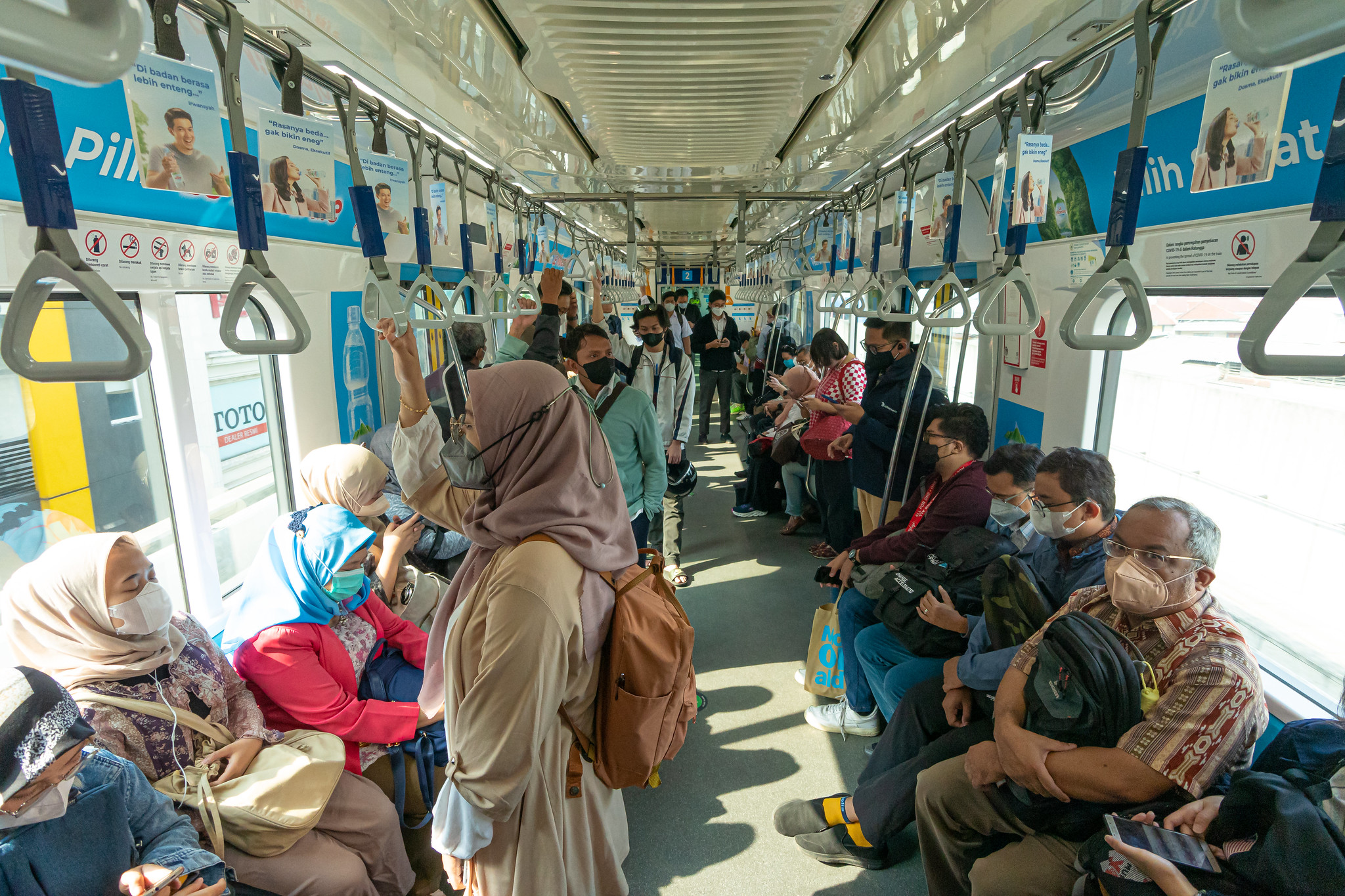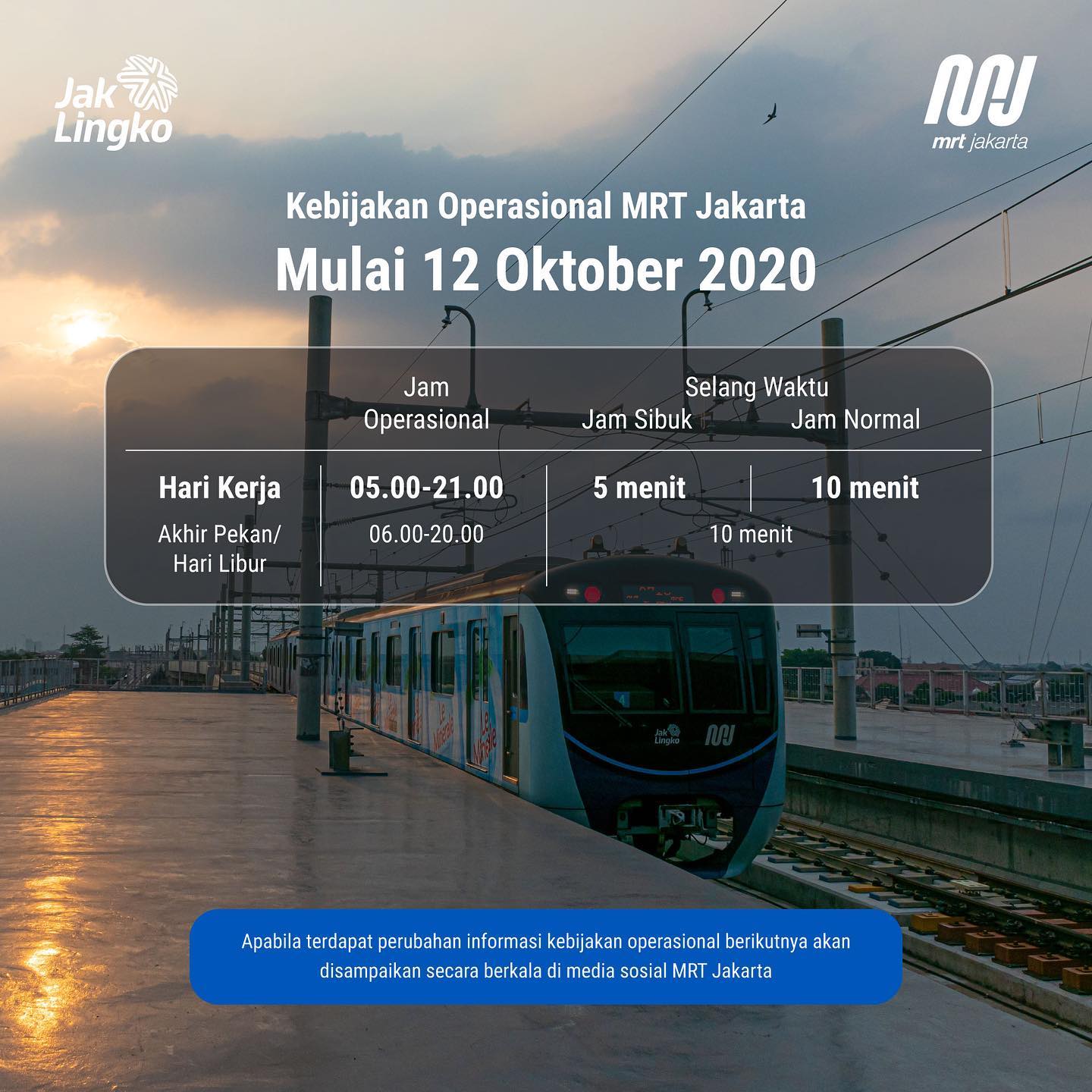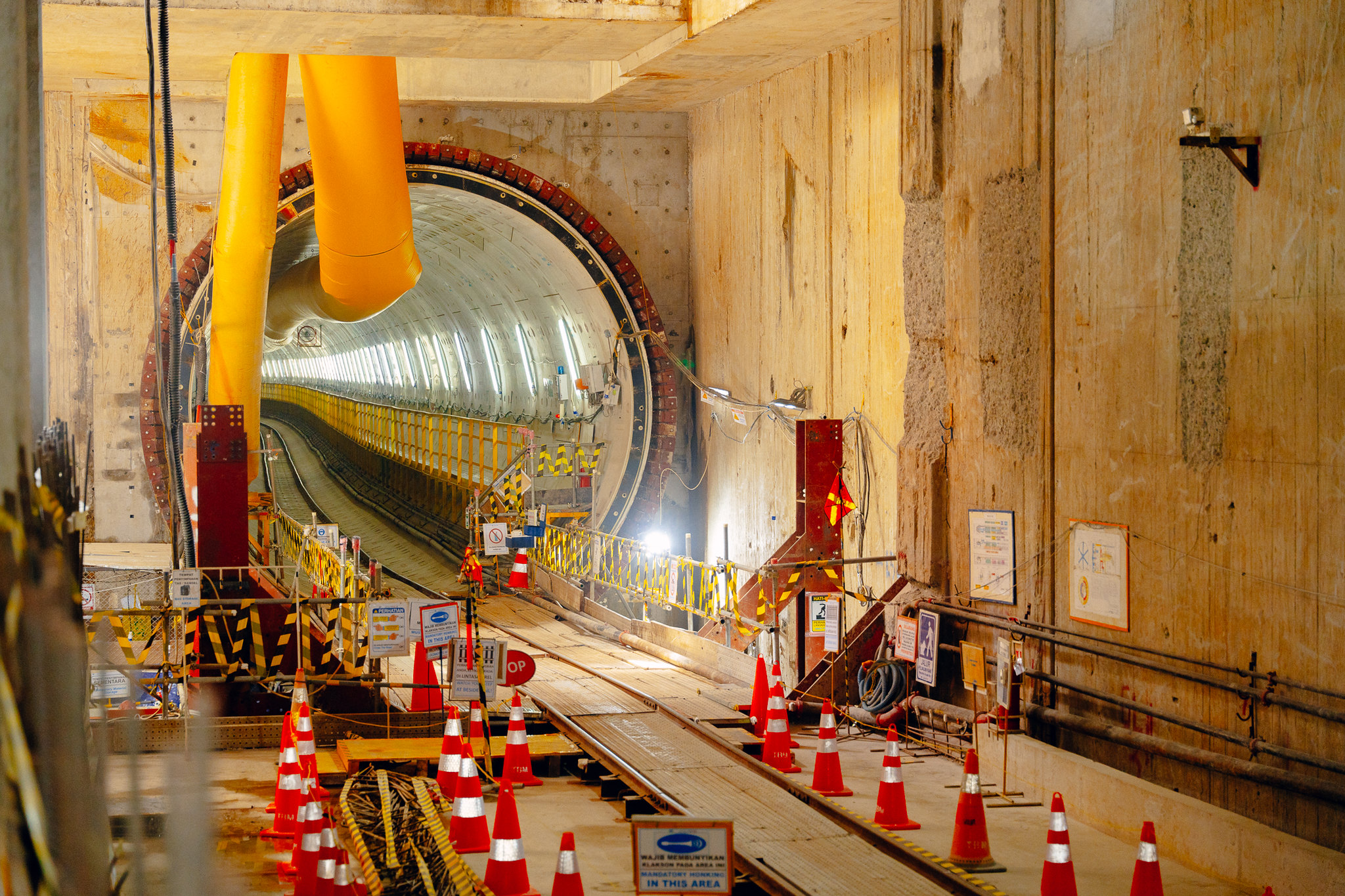MRT Jakarta CEO Interview with Vision by Protiviti: Massive Metro Project Will Make The City More Mobile, Modern and Sustainable

There’s a lot happening in Jakarta, Indonesia’s most populous and—for the time being, at least—capital city. Jakarta, the city of nearly 11 million people on the island of Java, is sinking as much as ten inches per year due to the excessive extraction of groundwater because piped water is not readily available. The World Economic Forum says nearly all of North Jakarta could be under water by 2050. In 2019, Indonesian officials announced an ambitious plan to relocate the capital to Borneo, but that plan is on hold due to COVID-19. What’s not on hold is another ambitious plan: building the country’s first underground transit system to combat Jakarta’s notorious pollution and traffic congestion problems, which cost the city some 67.5 trillion IDR ($4.9 billion USD) annually, according to the Indonesian Ministry of National Development Planning. Construction of Jakarta’s Mass Rapid Transit (MRT) system began in 2013, but the first concept of a metro in Jakarta dates back to the 1980s. The first phase of the project finished in 2019 and has already exceeded its target of serving 65,000 passengers per day, says William Sabandar, Jakarta MRT’s CEO. VISION by Protiviti’s Editor-in-Chief Joe Kornik caught up with Sabandar to discuss the ambitious project that’s been nearly 45 years in the making and how it will impact Jakarta’s future.
A passionate professional enjoying 25 years of leadership roles in public and private sectors, in various development fields: transport infrastructure and system, regional development, disaster and crisis management, energy, forestry and climate change.
Kornik: I know this has been a very long-term project with lots of planning and multiple phases. Can you update us on where the project stands right now, what the timetables are and what’s next for the project?
Sabandar: The idea started back in 1985; then the first feasibility study came in the 1990s, we started the work in 2013 and completed the first phase in 2019. That phase consists of 16 kilometers in South Jakarta and opened in March 2019. Now we are in the second phase where we continue with another 12 kilometers in North Jakarta, with a plan to complete it some time in 2027. By 2027, Jakarta will consist of a north-south network of 28 kilometers. We are also preparing the implementation of the third phase, which runs 31 kilometers east to west. Construction on that phase is scheduled to launch next year and be completed sometime in 2029 or 2030. At the same time, we are preparing for the fourth phase: This is also in South Jakarta and is about 12 kilometers and scheduled to be completed in 2029. We have also begun planning the fifth phase, as well. So, that’s where we are right now.
Kornik: This is a very ambitious project. I wasn’t even aware there was a fifth phase scheduled…
Sabandar: Well, we haven't announced the fifth phase just yet, but we will soon. And then there’s also a sixth phase. After the north-south and east-west lines are complete, we will have the circle, the inner line and the outer loop line. Once completed, the metro will consist of 325 kilometers covering 10 lines serving some 30 million people in the Jakarta region by 2030. This is how the MRT will become the backbone of Jakarta. One of the things the MRT will bring to the city is a new landscape. Jakarta will move from a very centralized city to one that is serving entire areas being developed along the metro line. In Jakarta, the development has always followed the roads, but the MRT master plan is to develop new towns along the rail stations. We call this “transit-oriented development,” and it will change the landscape of Jakarta in the future.
Kornik: I know there are more than 2.5 million daily commuters in central Jakarta. Most rely on private vehicles, making Jakarta one of the most congested—and polluted—cities on the planet. Is this why this project is so crucial to not only the city of Jakarta but the entire region?
Sabandar: Before 2019, Jakarta was one of the most congested cities in the world, ranked No. 3 by the TomTom Traffic Index. After 2019, Jakarta moved to No. 10. And just last year, it moved all the way to No. 31. And, of course, congestion is related to pollution, which also has improved, although we are aware some of that could be due to COVID. But those congestion numbers demonstrate how the arrival of MRT and people starting to move to public transport have already had an impact. But this is not just because of the MRT alone; since 2019, we’ve started to integrate the MRT into existing public transport, including the bus rapid transport, the commuter rail lines and all the feeder systems. When we’re through, nearly all residents of Jakarta will be within 500 meters from public transport. I believe that if you want to create a good city, a modern city, you must create a good public transport system. If you create a reliable system, a clean system and a safe system, people will use it. And when you integrate it with the feeding systems, it creates almost an entirely new city.
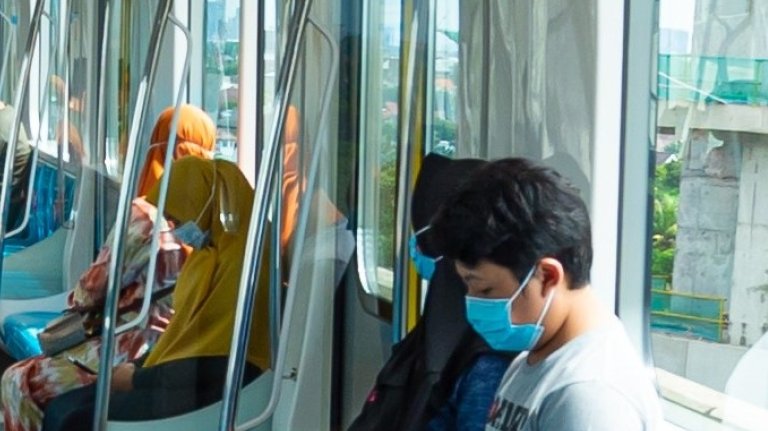
Kornik: As you say, this is an entirely new concept for Jakarta. Do you think it's enough to just build it or do you think there has to be some education to convince people to use it?
Sabandar: Very interesting that you ask that because yes, that was among our concerns: How do we change the culture of how people travel? We had some public transport and people just weren’t using it. But when we launched the first MRT line in 2019, we had many people riding it right from the start and it exceeded our initial ridership goals. I think people were happy that Indonesia finally had its own metro. For years, if we wanted to see this kind of modern transport, we’d have to go to Singapore. Also, the MRT in Jakarta set a new standard of service. We knew our on-time performance, for example, must be 100%. I told the team that you must give the extra mile of service to all the people; every single passenger gets treated with respect. There’s no rubbish on the trains or in the stations. And we have a very dedicated staff; they do not sit. Even I stand while on the train to set an example. We are creating a new culture of public transport that we never had before. You educate the community by showing evidence that public transport can lead to a more civilized life; this is how a modern city works.
Kornik: You touched on pollution briefly, and Jakarta’s track record has not always been great when it comes to the environment. I've heard you talk about how sustainability is key for all future projects. So, tell me a little bit about what the MRT can deliver in terms of sustainability and the environment?
Sabandar: It’s a big part of our mission; we changed our motto recently to highlight how the MRT is promoting mobility and ensuring sustainability, and we defined it as core to our long-term strategy for 2030. We have a sustainability committee that screens all the projects we do, and we started to also produce a sustainability report for the work that we do. We can already see from the evidence that Jakarta has less traffic. You can see blue skies now, and we used to only see smoke in Jakarta. Again, part of that is due to less travel during the pandemic, of course, but it started even before that. Sustainability, for me, is a practice that we do now for future generations to reduce congestion, to reduce emissions, and to reduce pollution.
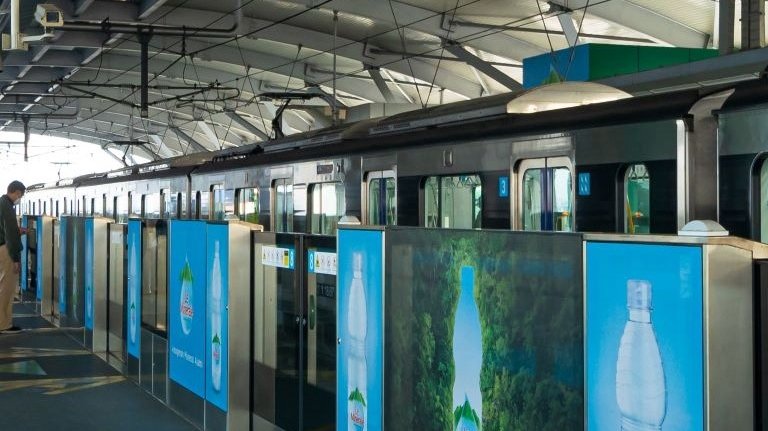
Kornik: Let’s talk about the unique environmental challenges that are facing Jakarta. The city is sinking several inches a year due to groundwater that’s being removed by residents, illegally in most cases. I’m thinking that would present some unique challenges building a transit system?
Sabandar: Yes, for sure there are some challenges in terms of construction and tunneling, but we cannot afford not to build MRT. It’s vital for the region, so we just need to be more careful. We have the best technology, but it's more challenging, and it's more costly because we’re dealing with soft soil and sediment all over Jakarta. The experts are working on it, and we have some learnings from other places, such as Amsterdam. For me, this is not an issue because there is a population that needs MRT; it's just a matter of making sure we have the proper technology to be able to manage the environment correctly. There’s another challenge with building the second phase and that’s that the construction is happening in the north where a lot of Jakarta’s heritage sites are located. So, we are, for sure, also managing that very carefully.
Kornik: And because Jakarta is sinking, I know there’s been a lot of talk about moving the capital to Borneo. Assuming that plan goes through, what impact would that have on the MRT?
Sabandar: I think it’s a big opportunity. Jakarta is the largest city in the Southern Hemisphere. So, if the government decides to move the capital, I think it gives us the chance to redevelop Jakarta in a more sustainable way. The city has a lot of government buildings, which I think could be repurposed or turned into green areas. We could reposition Jakarta as a cultural city, a sustainable city and as the economic center of the region. I look at Australia, which has Sydney and Canberra, and the United States, which has New York and Washington, D.C., as examples. If it happens, I envision Jakarta’s future as an economic and cultural hub with less traffic, less pollution… and less politicians.
Kornik: You just touched on it a bit, but paint a picture of Jakarta in 2030 or 2035, once the entire MRT project is complete. What will be the overall impact on the city, the region and its people?
Sabandar: The trajectory of Jakarta being a sustainable, modern and mobile city by 2030 is set. By that time, the structures of the MRT and its integration with public transport will be complete. Currently, only about 20% of Jakarta residents are using public transport; by 2030 we think that number will be more like 75%. So, I believe we are changing the landscape of mobility in Jakarta, and new urban regeneration projects along the line will create entirely new communities and a new vibrancy and culture for the city. So that is my vision of Jakarta’s future. That is the impact of the MRT.
Article by: Protiviti
Access Original Article here: https://vision.protiviti.com/insight/mrt-jakarta-ceo-massive-metro-project-will-make-city-more-mobile-modern-and-sustainable
